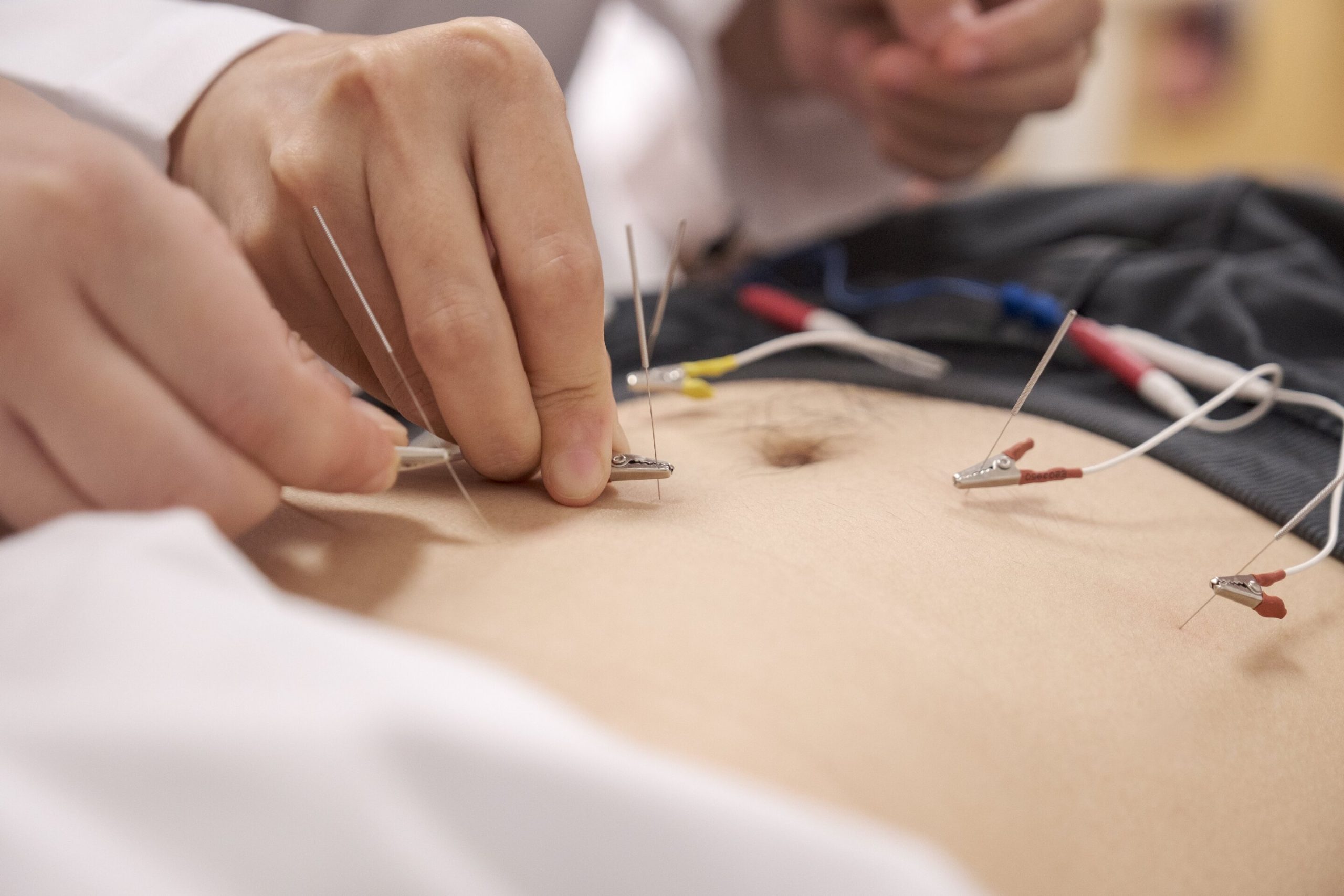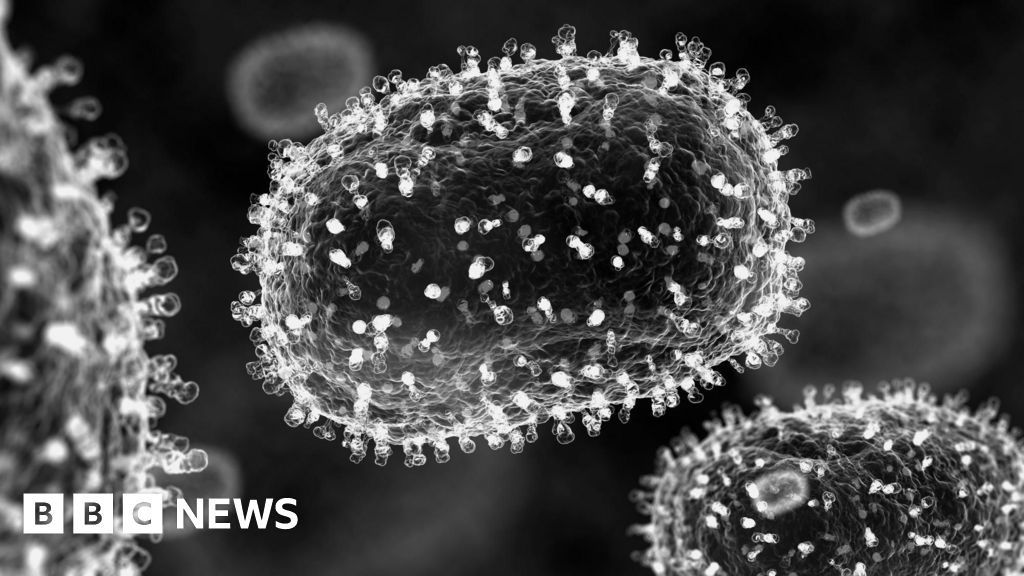
A team of scientists led by Nanyang Technological University Singapore (NTU Singapore) and Hong Kong University (HKU) has found evidence that electro-acupuncture—a form of traditional Chinese medicine (TCM) treatment—could be used to manage obesity.
In electro-acupuncture—a variation of acupuncture—needles are inserted into various points on the body, called acupoints. A gentle pulsating electrical current is applied to selected acupuncture needles as a means of stimulating the acupoints. In TCM, this stimulation triggers the body’s natural healing abilities.
Through laboratory experiments, animal studies, and a clinical trial reported in the Journal of Advanced Research in August, the team led by NTU Singapore and HKU’s School of Chinese Medicine showed that electro-acupuncture helped to reverse the effects of obesity in obese individuals and mice put on a high fat diet.
In this therapeutic approach, electro-acupuncture targets osteoprotegerin, a protein known for its role in bone metabolism. The research team, which includes collaborators from Hong Kong Baptist University, found that the protein also plays a key role in fat cell formation and obesity development, making it a potential target for obesity management.
With one in eight people living with obesity globally, there is a need for obesity management to be integrated into health care. According to the research team, the study findings point to electro-acupuncture as a promising therapy.
NTU Associate Professor Linda Zhong, one of the study leads and the Director of the NTU TCM Clinic, said, “Through our study, we confirmed the pivotal role of osteoprotegerin in how fat cells develop and the protein’s potential as a target for obesity management.
“We further showed through mice and human studies that electro-acupuncture could mediate the effects of obesity, suggesting that this form of TCM treatment could potentially help with obesity management. These findings add to a growing body of scientific evidence that supports the therapeutic benefits of electro-acupuncture and enhances TCM’s credibility and acceptance among practitioners and patients.”
The study aligns with NTU’s efforts to encourage research and development in TCM to help evaluate the efficacy and safety of TCM treatments. In addition, NTU has been looking at how disciplines such as artificial intelligence and data science can be used in TCM.
Link between osteoprotegerin levels and obesity
The scientists first confirmed osteoprotegerin’s role in adipogenesis (the process of fat cell formation) through lab studies on progenitor cells. These specialized stem cells differentiate into tissue-specific cells in response to specific protein signals. For this study, the scientists used adipocyte progenitor cells, which are the origin of fat cells.
When glucose and insulin were added to adipocyte progenitor cells to mimic the effects associated with obesity—such as abnormally high levels of blood glucose and insulin resistance—the scientists found that this metabolic stress activated osteoprotegerin production, which coaxed the adipocyte progenitors to form fat cells.
Further cell studies revealed that osteoprotegerin promotes adipogenesis through activating key signaling pathways in fat cell development.
The scientists confirmed this link between osteoprotegerin and obesity in mice fed a high fat diet for six weeks. When these mice were injected with osteoprotegerin, they gained weight and became more intolerant of glucose.
When the gene that codes for osteoprotegerin was “silenced” in these mice, their weight gain was significantly reduced and obesity development was delayed.
These experimental results suggest that overproduction of osteoprotegerin facilitates obesity progression and the development of associated diseases.

Managing obesity with electro-acupuncture
There is no known way to specifically inhibit osteoprotegerin activity. Knowing that electro-acupuncture has been traditionally used for obesity management and to regulate metabolism, the scientists decided to investigate if this approach could target the protein as a means to improve obesity.
For two months, the scientists administered electro-acupuncture on mice fed a high fat diet thrice a week at two acupoints based on their use in TCM for obesity management.
The scientists found that electro-acupuncture suppressed body mass gain in obese mice, reducing their fat percentage, body size, and size of fat cells in visceral fat tissues compared to obese mice not given the treatment. The treated obese mice’s glucose tolerance and insulin resistance—both indicators of obesity—also improved.
These effects of electro-acupuncture were reversed when additional doses of osteoprotegerin was injected into the same mice, suggesting that electro-acupuncture helped to reduce osteoprotegerin levels in the obese mice.
Clinical study
The scientists then organized a clinical study of 80 participants recruited in Hong Kong. These participants are aged between 18 and 65 years and have excessive visceral fat around the stomach (waist circumference of ³ 90 cm or more for men, and ³ 80 cm for women).
The participants were split into test and control groups: the test group received electro-acupuncture twice a week for two months; the control group received a sham procedure involving non-penetrating needles at the same frequency.
For this clinical study, the scientists targeted eight acupoints used in TCM to manage obesity, including the two targeted in mice studies.
The scientists found that while the test group participants did not lose more body weight than those in the control group, they had a significantly reduced waist-to-hip ratio, improved fasting blood glucose levels, and better insulin resistance, showing that electro-acupuncture could be a viable form of obesity management.
An initial analysis of the blood samples from five study participants revealed that these changes corresponded with lower osteoprotegerin levels, suggesting a correlation between osteoprotegerin and obesity development.
The correlation was confirmed when the same analysis was then extended to a larger group of 46 participants—23 who received electro-acupuncture and 23 who received the sham procedure—and found a significant reduction in OPG levels in the blood of those who received the treatment as compared to those who did not.
Commenting as an independent expert not involved in the study, Dr. Quah Teik Joo, Head of Complementary Integrative Medicine at Tan Tock Seng Hospital (TTSH) said the findings represent the early phases of developing robust evidence through research, and form a sound basis to design and carry out future studies.
Dr. Quah, who is also Senior Consultant, General Medicine at TTSH, added, “Obesity is a chronic disease with multiple risk factors and associated with other medical illnesses. It would be good for future studies to take into account changes in other risk factors and the long-term effect of electro-acupuncture either as a standalone treatment or in combination with more holistic approaches to obesity associated medical illnesses.”
The scientists plan to take these findings forward by verifying them in studies involving larger and more diverse populations, focusing on understanding the detailed mechanisms of how osteoprotegerin affects metabolism and obesity.
The scientists will also look at how increasing or decreasing the frequency of electro-acupuncture affects osteoprotegerin levels and the potential of this protein as a target to predict the therapeutic efficacy of electroacupuncture for obesity and other metabolic disorders.
More information:
Zipan Lyu et al, Osteoprotegerin mediates adipogenesis in obesity, Journal of Advanced Research (2024). DOI: 10.1016/j.jare.2024.06.018
Citation:
Electro-acupuncture could help with obesity management (2024, October 8)
retrieved 8 October 2024
from https://medicalxpress.com/news/2024-10-electro-acupuncture-obesity.html
This document is subject to copyright. Apart from any fair dealing for the purpose of private study or research, no
part may be reproduced without the written permission. The content is provided for information purposes only.


